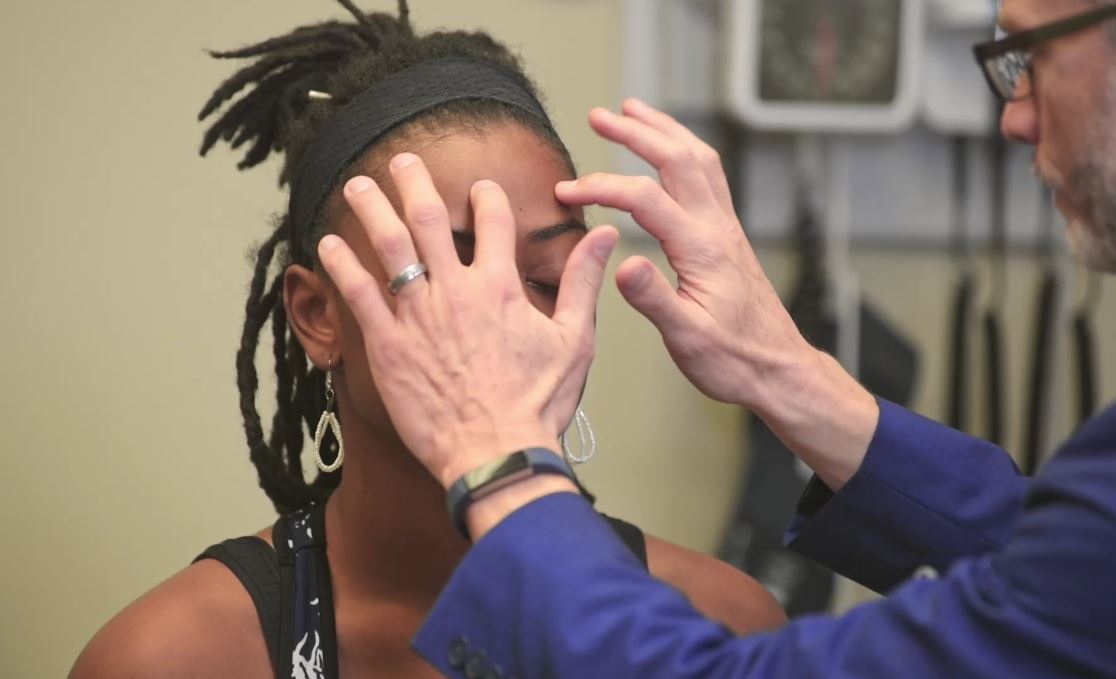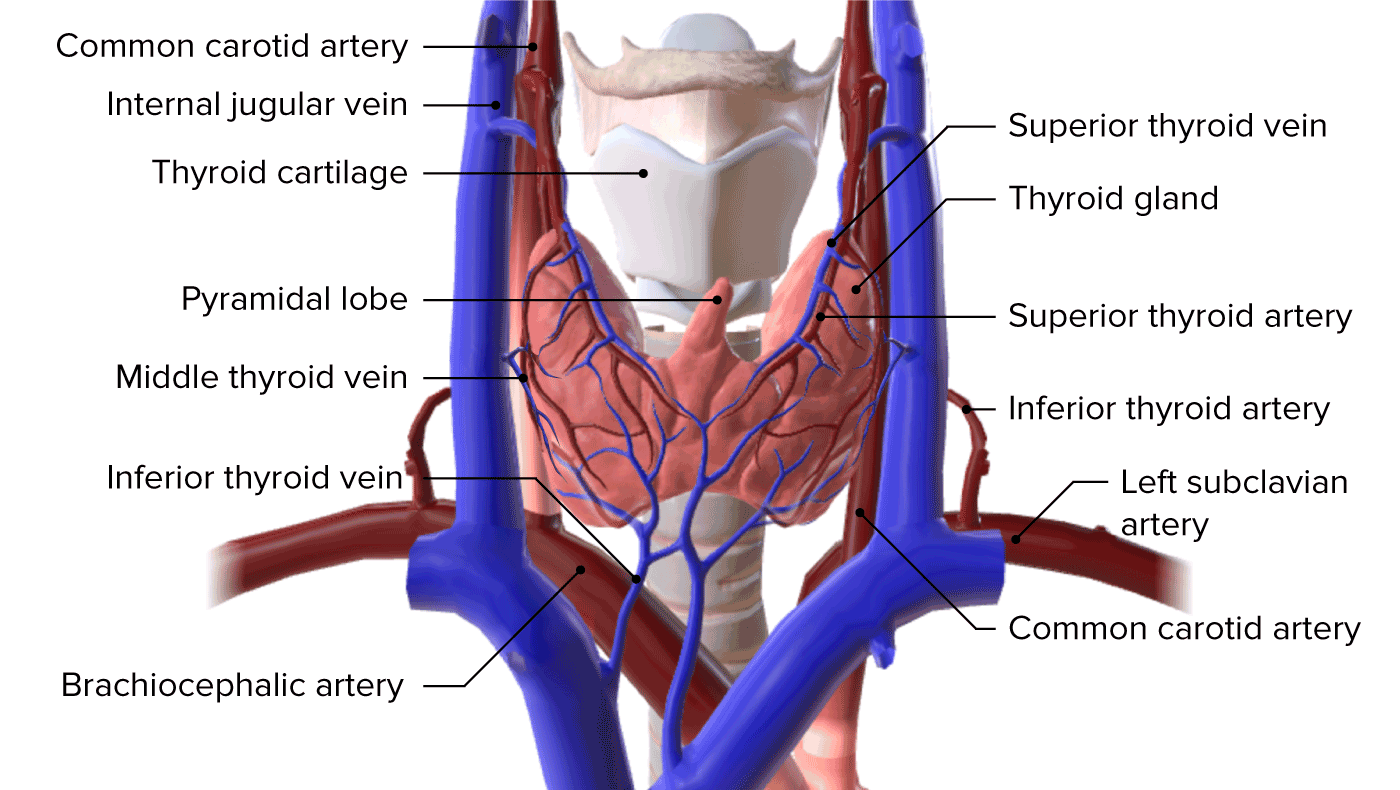Playlist
Show Playlist
Hide Playlist
Thyroglossal Duct Cyst
-
Slides Congenital Thyroid Pathologys.pdf
-
Download Lecture Overview
00:01 Hello and welcome to the congenital thyroid pathology that we need to refer to. 00:07 Just enough information to make sure that you’re able to distinguish one condition from another. 00:12 Think of this as being an enlargement that you’re going to find in the neck. 00:16 Here, you have a picture of a child that has such an enlargement. 00:23 Highly differential could be something like a thyroglossal duct cyst. 00:26 However, as we continue our discussion, we will further look at other differentials that you want to keep in mind and either rule them in or rule them out. 00:35 To begin, the thyroid-thyroid development, it is the back of the tongue known as a foramen cecum. 00:41 It is then migrating down towards… Where you would expect your thyroid gland to be? The beautiful isthmus that you know as being the thyroid. 00:51 However, anywhere along the migration from the foramen cecum and down to where the thyroid should be located and if there’s a remnant may then be referred to as being a thyroglossal duct cyst. 01:04 As the fibrous tract, which is the obliterated thyroglossal duct and extends from the pyramidal lobe and that is an important anatomical landmark that you want to pay attention to superiorly to the hyoid bone and may harbour thyroglossal duct cyst anywhere between those regions. 01:29 Now, when you have such a remnant remaining, is it possible that you may have altered thyroid function? No. 01:39 You’d have normal thyroid functioning, just as you would with normal thyroid, depending as to exposure. 01:46 Is it possible that you may then develop cancer in thyroid gland? Sure. 01:52 Could then the thyroglossal duct cyst, which is a remnant of your thyroid, may give rise to an ectopic thyroid cancer? That is a possibility. 02:01 Keep that in mind. 02:03 Careful examination of the anterior cervical region for identification of the pyramidal lobe superiorly to avoid leaving residual thyroid tissue is an important step to assure a total thyroidectomy has been completely and adequately performed. 02:23 It is important that you at least know the significance of that pyramidal lobe and that this is not just a transient or trivial piece of information. 02:35 Ectopic thyroid tissue can be found anywhere along the path from the foramen cecum, back of the tongue, down towards it should be by the hyoid bone. 02:45 It does not alter thyroid function, but, as I mentioned earlier, can give rise to ectopic thyroid cancers. 02:53 Let’s take a look at differentials. 02:57 A dermoid and sebaceous cysts are tethered to the underlying tissue, whereas when you have a thyroglossal duct cyst upon deglutition, you are going to find this to be moving. 03:13 Branchial cleft cysts are associated with a sinus tract or fistula. 03:18 Differential, this is a branchial cleft cyst, usually associated with the sinus. 03:24 That’s something that you want to keep in mind. 03:27 Lipomas are superficial, have ill-defined edges. 03:32 In other words, you’re thinking about subcutaneous tissue and fat with the lipoma. 03:38 Or if your patient is suffering from, let’s say, some type of infection, may then result in lymphadenopathy cervical and salivary gland tumours would be other differentials that you want to keep in mind whenever you find enlargement in the neck region.
About the Lecture
The lecture Thyroglossal Duct Cyst by Carlo Raj, MD is from the course Thyroid Gland Disorders.
Included Quiz Questions
What is TRUE about the thyroglossal duct?
- Ectopic thyroid tissue can be found anywhere along the path of the duct.
- It is made up of transitional epithelium.
- It forms from the hyoid bone.
- It begins at the foramen ovale.
- It severely alters thyroid function.
Which structure must be identified to ensure a complete thyroidectomy has been performed?
- Pyramidal lobe
- Foramen cecum
- Obliterated thyroglossal duct
- Hyoid bone
- Extraductal cyst
In which way do thyroglossal duct cysts differ from dermoid and sebaceous cysts?
- They are less tethered to underlying structures.
- They are associated with a sinus tract.
- They are associated with fistula formation.
- They are superficial.
- They have ill-defined edges.
Customer reviews
5,0 of 5 stars
| 5 Stars |
|
5 |
| 4 Stars |
|
0 |
| 3 Stars |
|
0 |
| 2 Stars |
|
0 |
| 1 Star |
|
0 |





